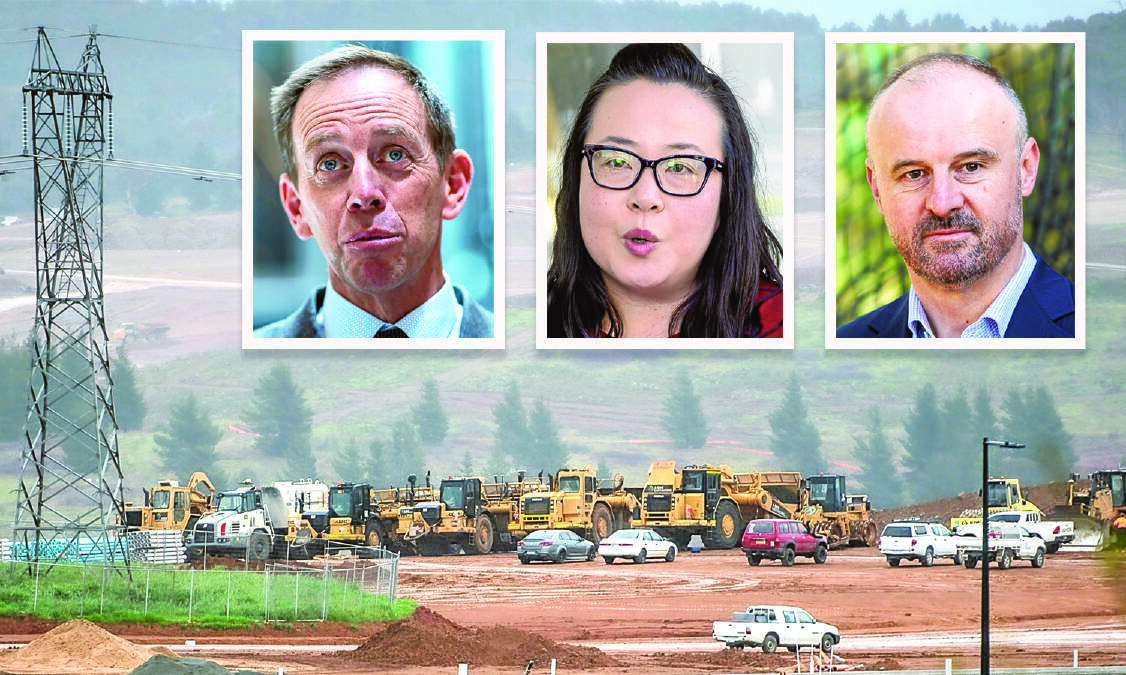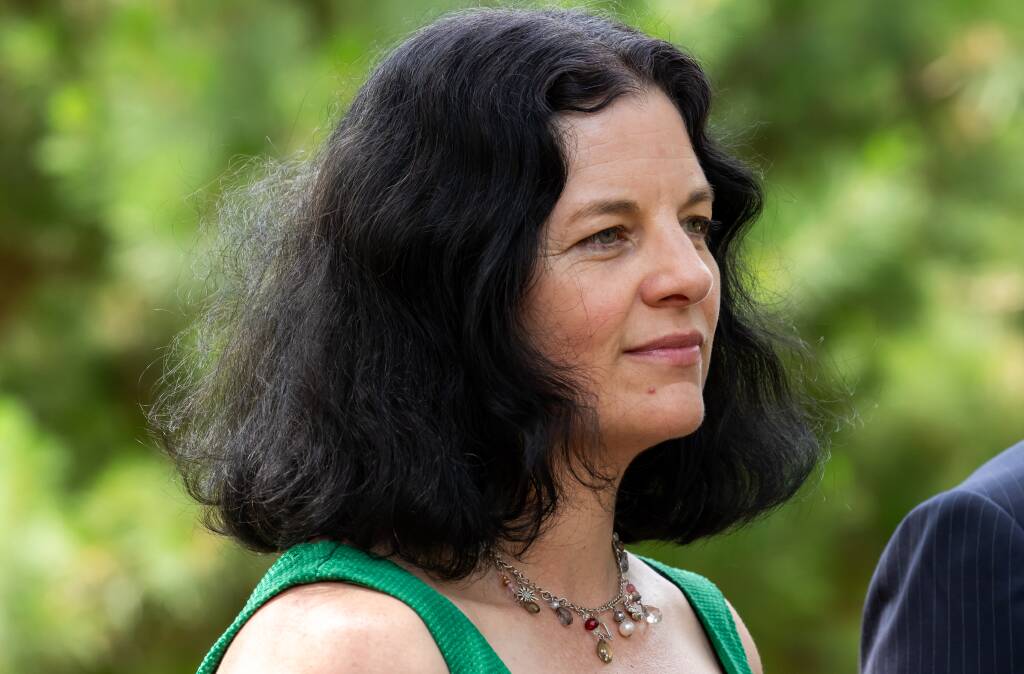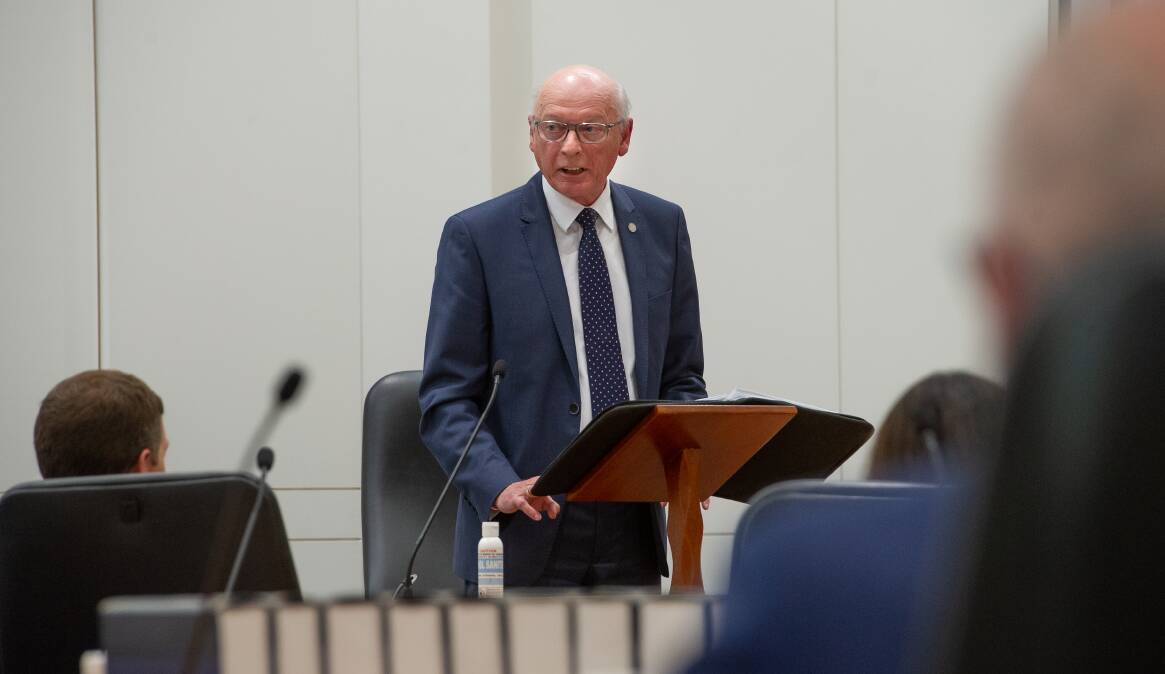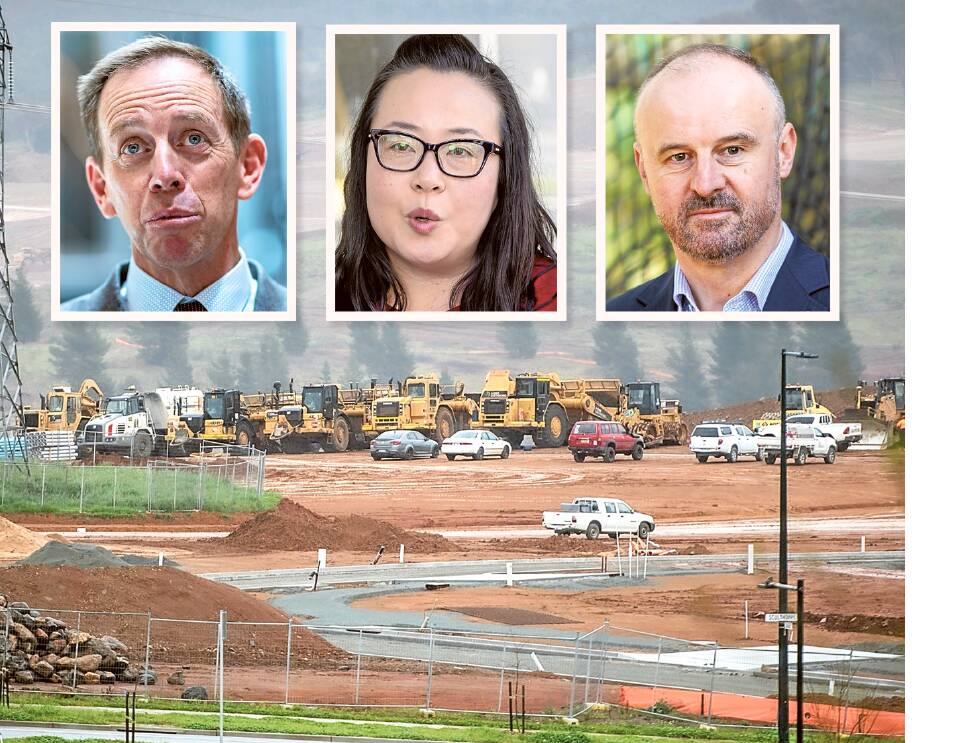It was supposed to be the great triumph of this parliamentary term.
But the long-awaited overhaul of the ACT's planning laws has caused the most tension between coalition partners Labor and the Greens.
Those tensions will only amplify in the lead up to the October election as the two governing parties seek to champion their different views on the future look and feel of the capital.
With the Liberals also pushing their outside alternative, planning will be a key policy battleground in the election campaign, where the parties will clash against a backdrop of Canberra's high housing costs.
Go out or go up
Planning is a perennial issue in the ACT. A great tension exists about whether the territory should go out or go up.
The capital's population has significantly increased over the past two decades and it's only going to increase further, with forecasts expecting the population to increase to nearly 800,000 by 2060. All those people are going to need a place to live.
The new territory plan and district strategies, released last year, chart the path to adding up to nearly 150,000 homes across Canberra.
There is an average of 2.3 people in a household in Canberra, the 2021 census found.
The three major political parties disagree about where the 150,000 homes should go. The Greens think the majority should go within existing suburbs, Labor thinks the same but has a softer approach to their governing partners.
The Liberals think Canberra needs more standalone houses but has not yet addressed what they think should be the split between infill and greenfield.
There has been a notable shift from Chief Minister Andrew Barr when talking about planning over recent weeks. While he has sought to emphasise the need for increased density over the past five years, he has made a few statements recently highlighting the need for new suburbs.
"We want more people living in our CBD but we will also need new suburbs," he said in a Committee for Economic Development Australia event.
"The approach to meeting new housing supply needs to be multifaceted. It can't just be about infill and it can't just be about new suburbs. It needs to be the totality."

The Chief Minister is not about to announce a change to the 70:30 urban infill target but he is clearly sending a message that Labor is not the Greens and under a Labor-led government new suburbs will be developed.
The Greens want an even higher urban infill target with 80 per cent of potential future development to take place in Canberra's existing footprint. The party also wants a city limit set for the territory.
Greens planning spokeswoman Jo Clay said careful policy work, studies and consultation would be needed to determine where the city limit should be set.
She said subject to these studies the Greens would be happy "to finish building what we've started", including the rest of the suburbs in Molonglo, Gungahlin and Ginninderry. Ms Clay said development should not occur in Kowen or in the western edge.
The Greens support extending the territory's border in Ginninderry to encompass the NSW side of the development.
"The ACT government greenfield pipeline has a supply for greenfield areas as far forward as 2052," Ms Clay said.
"It is high time we set actual city limits and made firm plans for a future that is within those limits."
Beyond the suburbs already gazetted for future development, the territory government has been exploring the potential for new suburbs in Canberra's western edge.
The government is undertaking studies into future development in the western edge, which is bordered by the Murrumbidgee River, Weston Creek, Molonglo Valley and Belconnen.
The land includes nine farming blocks which were controversially bought by the ACT government between 2014 and 2017.

"There are logical city limits to Canberra bounded by national park, water catchments and areas of high environmental significance but Canberra still does have a little bit of room to grow," Mr Barr said.
"The position we're putting forward, I think, strikes the right balance and will enable us to deliver the housing supply Canberra is going to need but at the same time protecting the environment."
The Canberra Liberals say they are open to hearing from the community about whether they would like a cap on the growth of the territory. But it is likely any city limits from the party would be much larger than what the Greens would want.
Opposition Leader Elizabeth Lee told a Property Council ACT event the Liberals would explore development in west Tuggeranong.
Development of the area, located west of the Murrumbidgee, was strongly pushed by former ACT Liberal senator Zed Seselja.
But the territory government has ruled out developing the area due to environmental concerns and the cost of servicing the land would mean no affordable homes could be built in the area.
In 2020, the Liberals ran on a campaign that Canberrans were leaving the ACT and moving across the border due to high housing costs.
Early signs suggest this could possibly feature in this year's campaign.
"The Canberra Liberals have long advocated for genuine choice when it comes to housing in the ACT which they have not been afforded under the Labor-Greens government's infill agenda," Liberals planning spokesman Peter Cain said.
"The Canberra Liberals will put forward a number of planning policies in the lead up to the election in October that will provide Canberrans with genuine choice rather than being forced into apartments which could lead residents looking over the border for detached housing."
Dual occupancies and bigger homes
The ACT Legislative Assembly passed a new planning bill last year following tough negotiations.
The Greens had concerns about the "outcomes-based" bill, including the need for stronger environmental protection and better community consultation.
Greens leader Shane Rattenbury spoke out against the bill and, in doing so, meant his party was unable to be part of cabinet discussions in the bill.
The two parties eventually came to an agreement but the differences didn't end there.
Following the passage of the bill, the government outlined a new territory plan and district strategies to govern the implementation of the act.

A key policy was to change rules around RZ1 zoning, which are blocks only allowing a single detached home. The plan would change this to allow unit-titled dual occupancies on larger blocks.
But many thought the changes did not go far enough.
The change was limited to blocks more than 800 square metres and the second home could only be 120 square metres. There were also other technical limits.
The property industry and other stakeholders thought the changes did not go far enough. Neither did the Greens or Liberals.
The Greens want RZ2 zoning to be applied to RZ1 blocks, which would allow for small blocks of flats or townhouses.
The Liberals think the 120-square-metre limit for a second property is too small.
A tripartisan committee, which included Labor backbencher Suzanne Orr, felt the policy would have "limited impact on meeting the housing targets for the expected population growth" and there may be a limited uptake of dual occupancies.
These differences will set the battleground for October and planning will continue to be a contentious issue in the territory.








